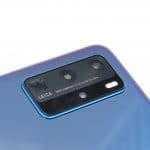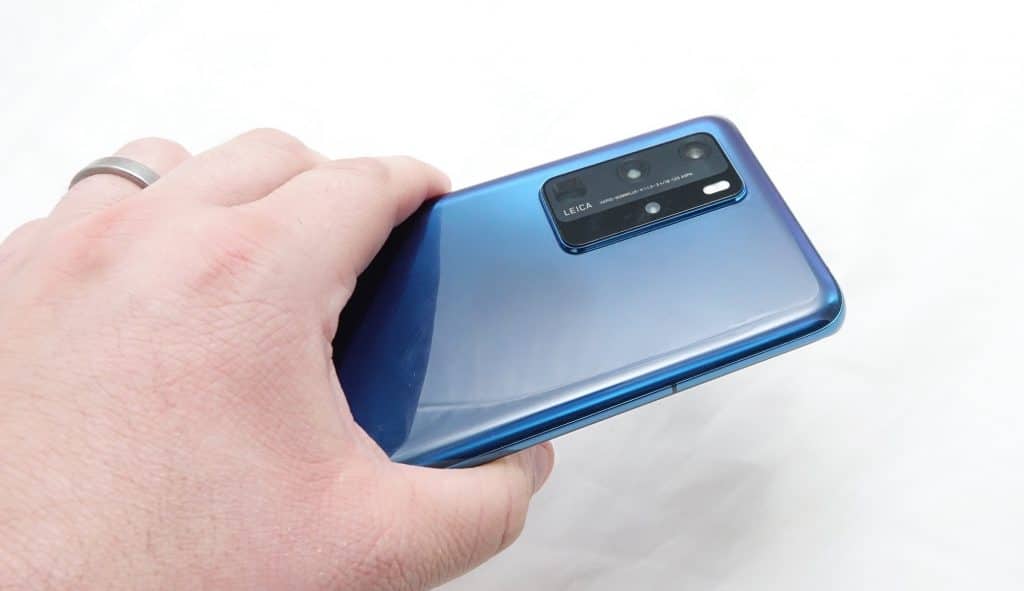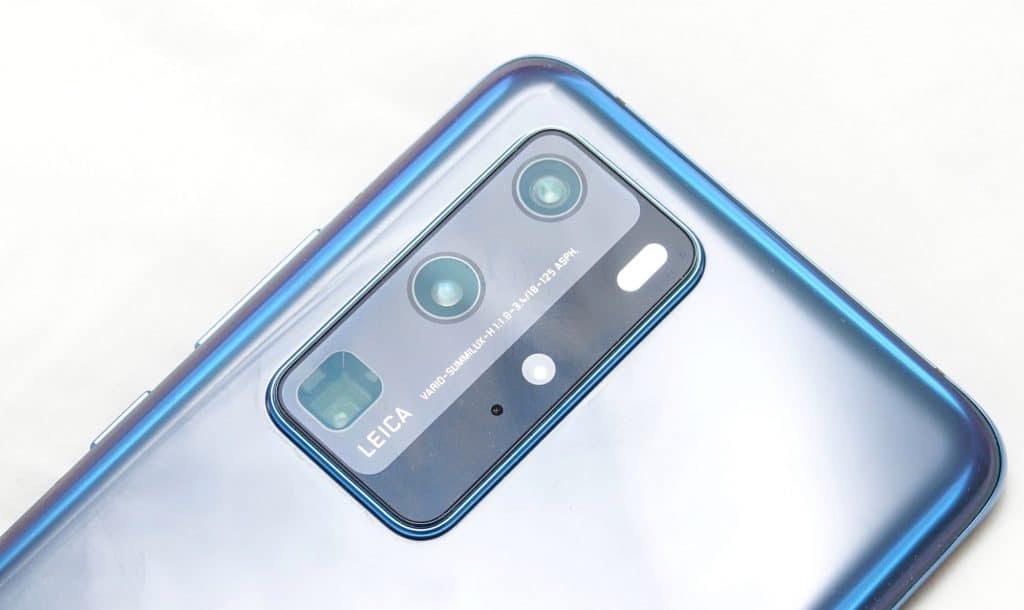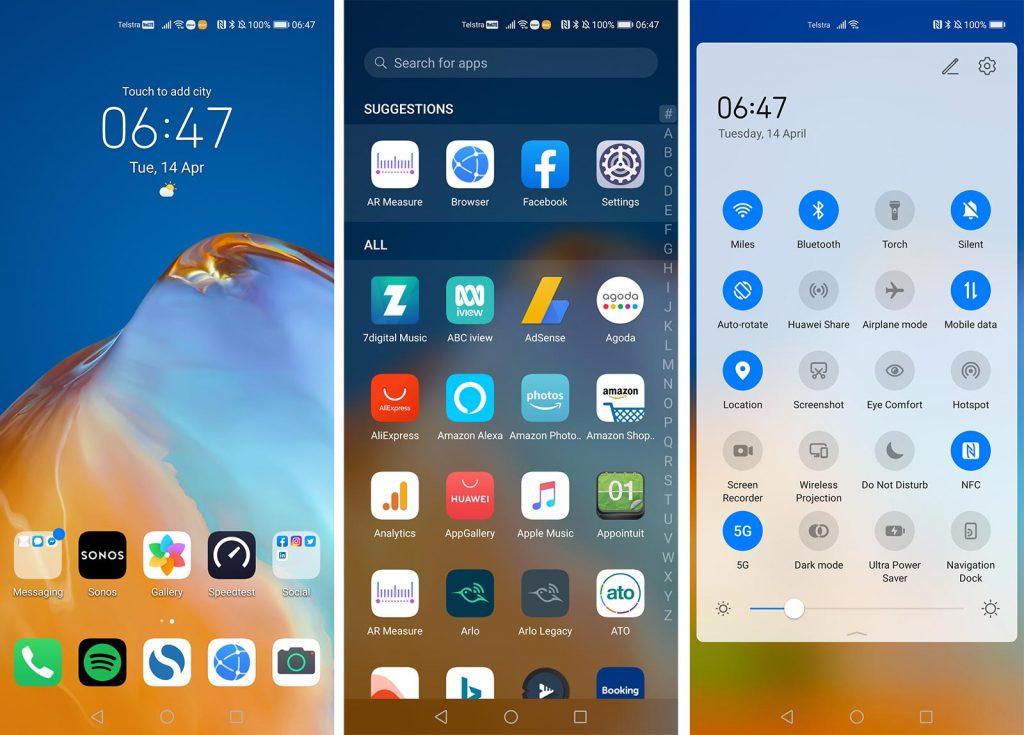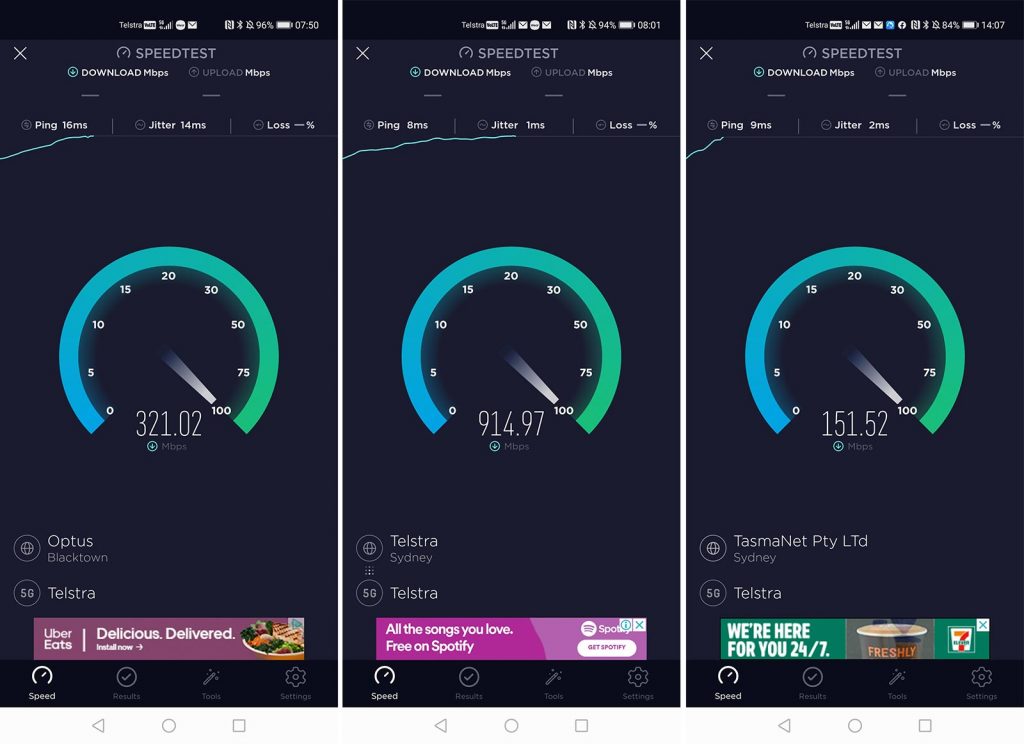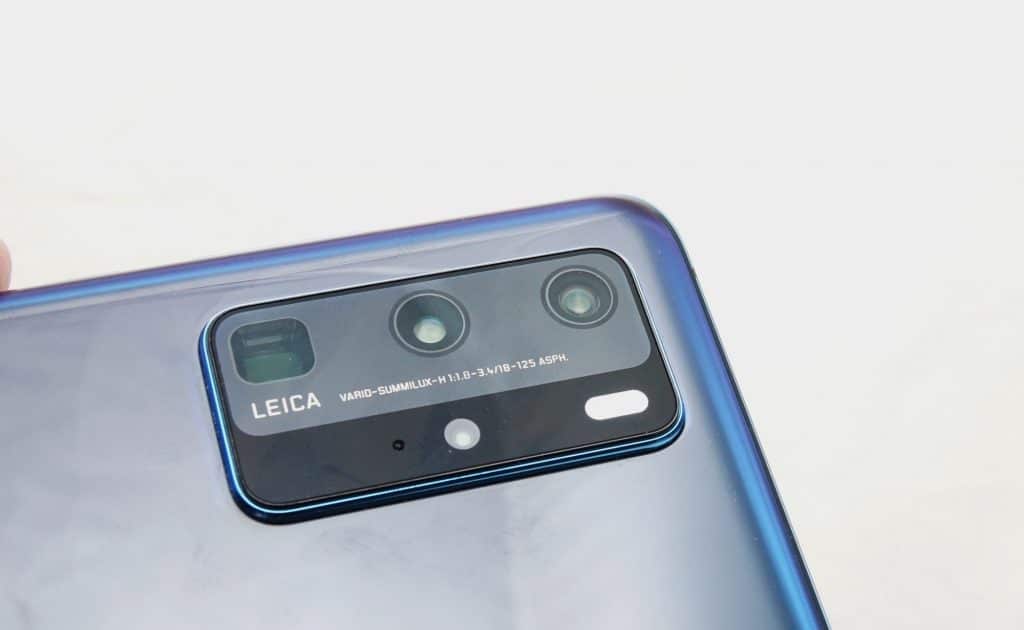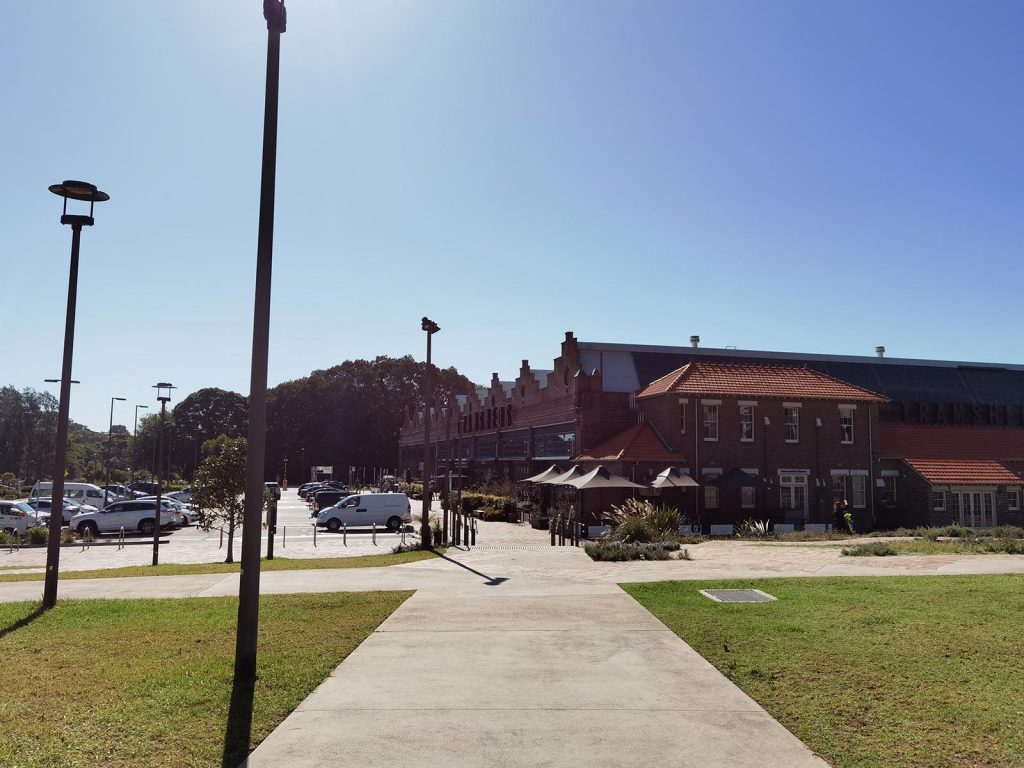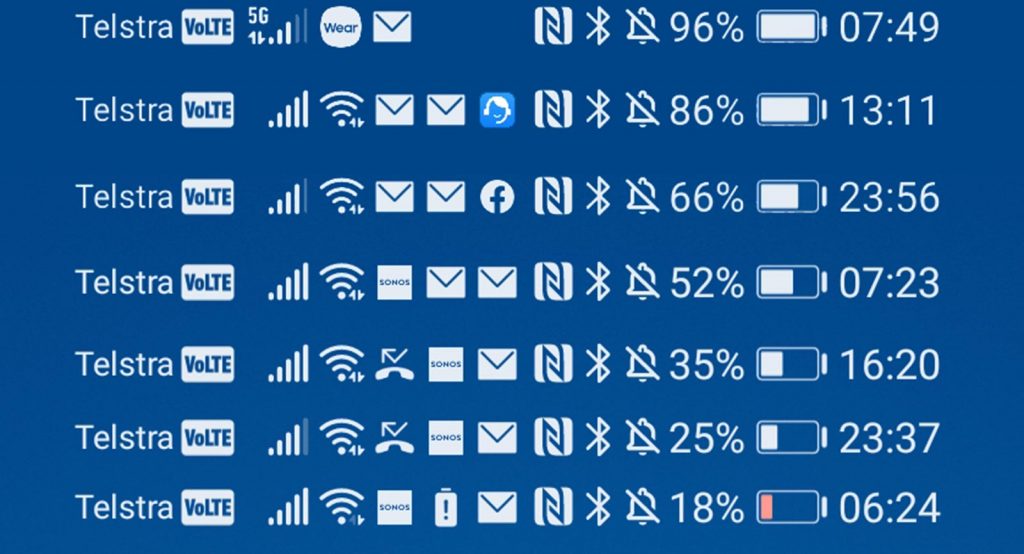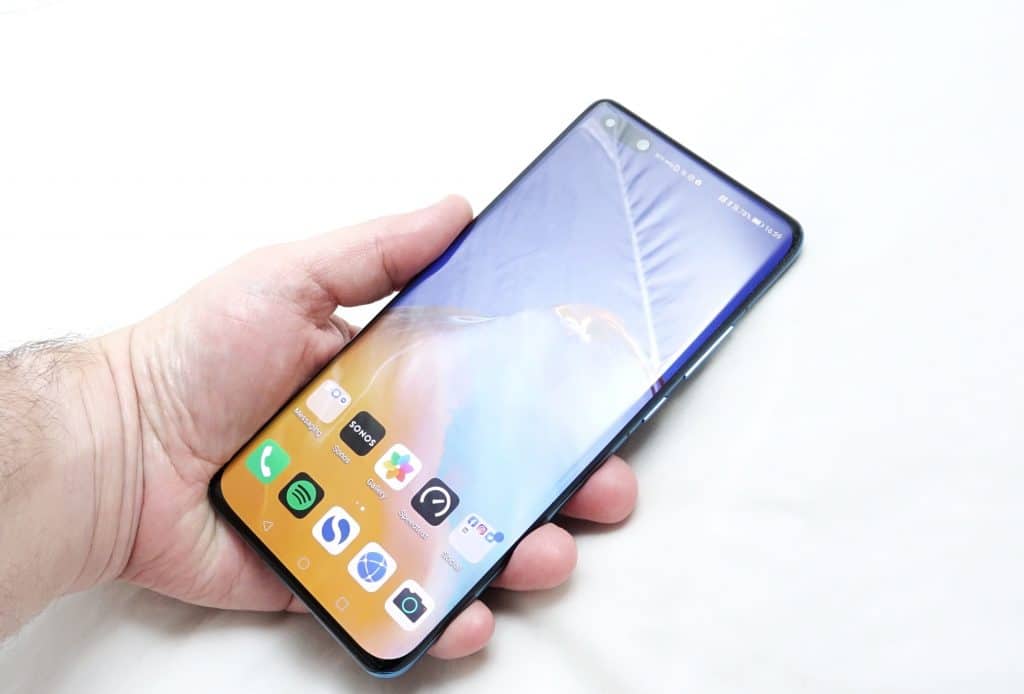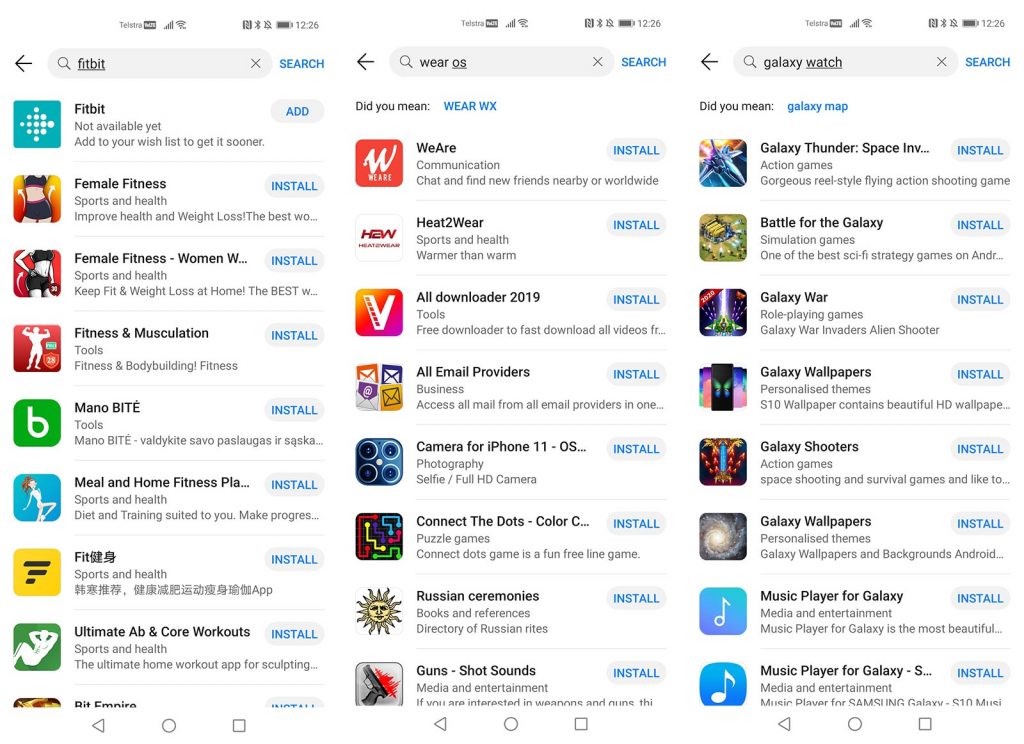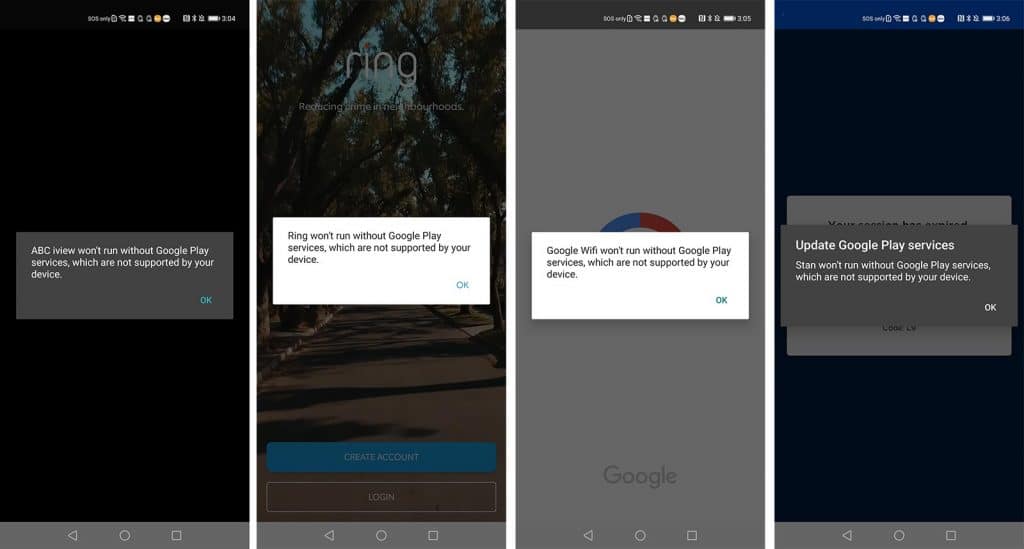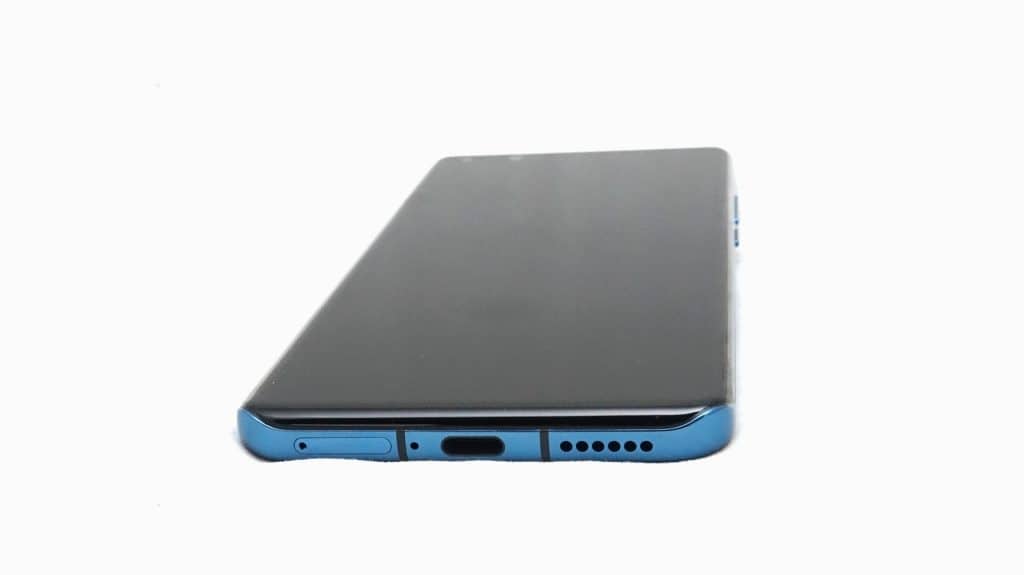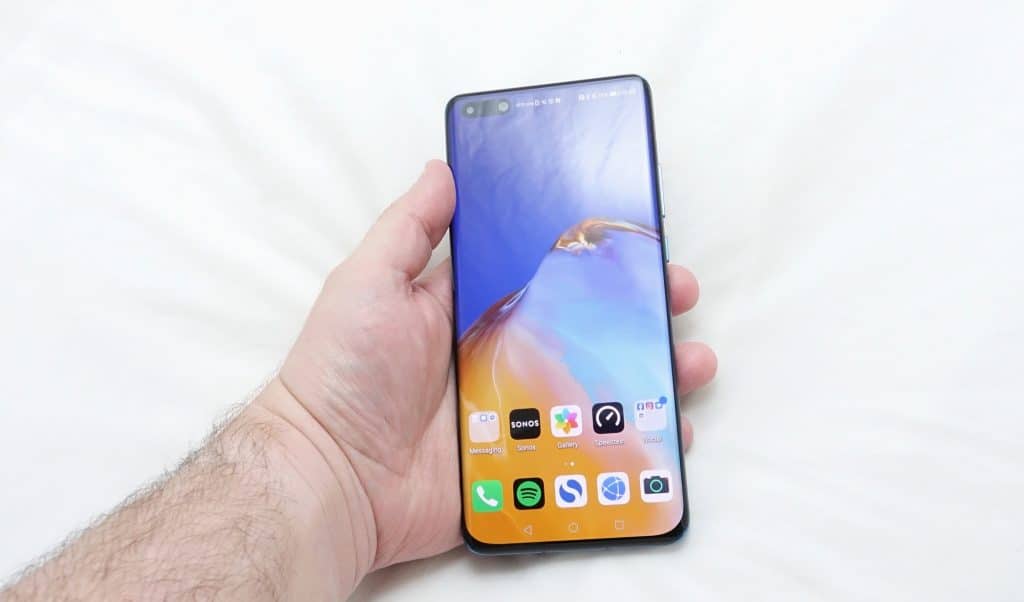Quick review
The good
The not-so-good
Camera, phone. Camera. Phone. These days, you don’t need to look hard to find a device that combines both, but in the Huawei P40 Pro, one feature definitely sits above the other.
If you needed to rate one feature over another when buying a phone, we bet the camera would be pretty high up there. Easily one of the strongest reasons to consider something new, the camera has become one of the biggest battlegrounds in new phones.
In fact, for the past few years, we’ve seen some pretty impressive developments in that regard. From the emulation of lenses that provide soft background portrait shots to cameras that zoom in by using multiple lenses, phone makers have found ways to make smartphone cameras just that much better.
We’ve seen impressive cameras from Apple, from Samsung, from Nokia, and others, and have even seen some impressive developments from the likes of Huawei, which had teamed up with Leica in some of its phones for a number of years now. Last year’s P30 Pro stood out as one of the best not just because of the camera, but because it was the package: an excellent camera in a great Android phone with solid battery life.
But in the past year, things have changed. Huawei isn’t able to work with Google due to a US trade ban, and that’s forced the company to do things differently. This year, we have the P40 Pro, but can it possibly be as good as 2019’s P30 Pro, a phone that is still available, still supported by Google, and still a pretty solid device?
Design
A new generation of the Huawei P-series has taken what worked last time and added a few changes. While Huawei has given the new model a bigger number and a different camera bump, the design isn’t a huge departure or leap from what we’ve seen prior.
There’s a large screen that curves slightly on the edges and corners, a coloured metal frame, and a noticeable camera protrusion on the back, which itself is shaped a little like a smaller version of the phone itself.
Unlike the Mate 30 Pro, Huawei has kept with proper physical buttons, which makes the phone easier to use, though there’s an impossibly large selfie camera spot in the top left. In the P40 Pro, Huawei has adopted a punch hole design similar to the Galaxy S10+ last year, something else we weren’t super fans of.
Different from the Samsung phone, the P40 Pro throws this notch to the very left and increases the length so that it takes up roughly a good third of the horizontal space, which in turn looks silly. It’s wider and weirder, and the sort of thing that like in the Samsung, still throws balance out. If you have OCD, expect to be annoyed.
At least it feels good in the hands, with the glass feeling solid and premium, and comfortable despite almost coming across like it should have more heft than what it does.
Features
Inside that metal and glass design, you’ll find Huawei’s own processor handling the system alongside a fairly generous amount of memory, with the Kirin 990 5G eight-core chip paired with 8GB RAM and 256GB storage. If a quarter of a terabyte of storage isn’t enough for you to work with, Huawei’s P40 Pro is expandable, thanks in part to its own memory format, the nano SIM-sized “NM” memory format, which can take up the second spot on the SIM card tray.
As the processor’s name suggests, however, this is a 5G chip, and so you get a 5G connection on the P40 Pro if your telco supports it, supporting some pretty fast speeds, while WiFi at home and in the workplace is handled by WiFi 6, also known as 802.11a/b/g/n/ac/ax. Bluetooth 5.0 is also here, as is Near-Field Communicaiton (NFC), GPS, and infrared. Wired connections are far less versatile, with only the one found here: a USB Type C port at the very bottom of the device.
Cameras are one of the star attractions in the P40 Pro, something you’ll see when you take a glance at the back and that large camera block.
Shaped a little like a smaller version of the phone itself, the rear camera setup includes a 50 megapixel standard wide camera supporting an aperture of F1.9, a 40 megapixel F1.8 ultra-wide, a 12 megapixel F3.4 telephoto, and a 3D depth sensor, with much of this expanding upon what Huawei released in last year’s P30 Pro. Some of the technology improvements are also exhibited in the video capabilities, with the Mate 30 Pro’s super slo-mo supported in this camera, as well.
Meanwhile, the front camera is no slouch either, supporting two cameras, with a 32 megapixel F2.2 camera, plus a depth sensor, as well. That’s what sits in the fairly sizeable punch hole section at the top of the screen, taking up a portion of the 6.58 inch Full HD+ curved screen, and leaving the rest for you.
That sits atop the metal and glass phone measuring 8.95mm thick and weighing 203 grams, which is also water-resistant, rated for IP68 in the tests. A fingerprint sensor is built into the screen, with security handled over fingerprint and facial recognition.
Meanwhile, the battery on the Huawei P40 Pro is rated for 4200mAh, and supports wireless charging.
In-use
Grab the P40 Pro and start playing with it, and you’ll find a rather unique experience that’s a little like a regular Android phone, and yet also not like one at all.
Built with Android in mind, Huawei’s flavour of Android has been made without the prior blessing of Google, thanks to the operating system being open source. It still looks like Android, much like it did on the Mate 30 Pro, but it just won’t run the Google Play Store or any of the Google apps and services. You get Huawei’s app store, which isn’t fully realised, but does run Android apps.
And of course, you can use the Huawei P40 Pro without needing access to Google’s software store, it’s just a little difficult. First, you may not be able to get the apps you want because they can’t be found on the Huawei equivalent, and while you might be able to find them using an alternative app store like Amazon’s, you may not be able to run them because — secondly — Huawei can’t run apps requiring the use of Google’s Play Services.
So already using the P40 Pro is just a little more complicated. If you need apps in a country reliant on a typical version of Android, you may struggle.
If you don’t, however, using the P40 Pro isn’t hard, more just getting the apps. Using the device itself, you’ll find a fairly flexible version of Android with its widgetised home screens, dropdown menu, app drawer, and a fingerprint reader built into the screen for security, plus facial security, too.
Performance
Under the hood, there’s Huawei’s Kirin 990 5G chip, a processor paired with 8GB RAM, with this combination able to handle most things cleanly. We found a little bit of lag jumping between apps, but for the most part, the system handled itself quite well.
It’s actually possible the bugs we found could have come down to a modified version of Android, which is one of the flaws of the Huawei P40 Pro. A downside of not having the blessing or cooperation of Google since May 2019, the P40 Pro doesn’t have the cleanest version of Android you’re likely to find, and with Huawei’s EMUI, is based on the open source edition, but may come with bugs.
Unfortunately, you’ll have no way of knowing whether it’s the hardware combination or the software that’s breaking the environment, but you may find slowdowns here, that much we can say.
At least the slowdowns shouldn’t be a problem if you’re on a 5G network, with some fast mobile performance on offer.
In fact, in our testing in Sydney on the Telstra 5G network, we found speeds hit 1Gbps, but would more commonly sit around 150 to 300Mbps in our tests. That’s not too shabby at all, and it’s worth noting that the P40 Pro will default back to 4G when 5G isn’t found, so even if your network isn’t 5G ready where you are, you should see fast speeds regardless.
Camera
The primary reason Huawei’s P40 Pro exists is likely for the photographic abilities, which is actually what the “P” means in the range. “P” stands for “photography”, and you’ll find a heavy reliance in the Huawei P-series throughout the years, whether it’s because of Leica lenses, portrait systems, or different game-changing approaches to sensors and camera configurations.
Last year in the P30 Pro, Huawei, Sony, and Leica teamed up for a different type of sensor that notably improved performance, and allowed the phone to do some rather cool things with low-light, achieving what we thought was the best camera of any phone all year.
This year, the P40 Pro improves things just a little, though mostly from the combination of parts. Huawei is upping the megapixels slightly, improving the video recording from the learnings of the Mate 30 Pro, and basically enhancing the camera system, though it’s not the revolutionary change that we saw last year, and more an evolutionary one.
An increase in megapixels across the sensors, while keeping the concept largely the same improves the outcome, with Huawei leveraging that red-yellow-yellow-blue (RYYB) sensor from before, allowing the camera to pick up on colours and light in a different way from other phone cameras in the world.
It means you’ll find the quad camera setup on the Huawei P40 Pro delivers similar results to its P30 Pro sibling, with sharp and crystal clear colours across shots in day and night, not to mention giving you a little flexibility in zoom, as well.
Thanks in part to the depth camera, portrait photography remains one of the P40 Pro’s strong points, and whether you’re letting the camera decide on the mode or you’re choosing portrait mode yourself, the portraiture settings handle faces and blurred backgrounds very well.
While we thought Samsung’s Live Focus mode could be a lot better and Apple’s iPhone portrait mode still has some work to do, the P40 Pro portrait mode is one of the best around, even edging out Google’s Pixel portrait camera, which does a stellar job, too.
Selfies are also a win in this phone, thanks in part to a 32 megapixel camera, which is easily more than social media apps will know what to do with, and plenty to highlight your skin. And if you don’t want to highlight your skin, Huawei offers “beauty” mode skin softening.
In fact, Huawei offers quite a bit for its modes, with a few downloadable options and some Leica-inspired colour modes which change the colour with an Instagram-like retro film mode.
All up, the camera is quite impressive, offering more than enough in performance and clarity, and evolving that whole attention to detail Huawei’s cameras have become known for.
Battery
One area that seems to handle itself quite well is the battery life, with our P40 Pro review period delivering a solid 48 hours of life, though we have questions to its long-term viability.
Here’s the thing: our regular battery run down test couldn’t be performed on the Huawei P40 Pro because of the lack of apps and wearable connections. For instance, Pickr phone reviews keep a wearable connected all throughout the testing period, but with no support for either Fitbit, Apple Watch, or Samsung Galaxy/Gear, we couldn’t test this. Huawei only offers support for Huawei’s wearables on the P40 Pro, hampering testing efforts somewhat.
Also playing into that surprisingly solid battery outcome would be the lack of apps, which lessens your reliance for using the phone, because there’s less you can do with it.
Factor in what appears to be some pretty aggressive power management by the operating system — something we noticed when social media messaging platforms were noticeably delayed compared to their desktop counterparts — and you have some pretty telling reasons why our Huawei P40 Pro review could have shown better battery life than we expected.
While two days is possible out of the P40 Pro, we suspect most people who find a way to use the phone more aggressively will see a day and a half, which sounds about right for a phone built in this way.
Value
And at a price of $1599, the P40 Pro would be priced right for a solid flagship in 2020, that is if all the stars lined up properly.
The problem is this phone is galaxies away from being in the same neck of the woods as other mobiles being released today, and there are a few reasons why.
What needs work?
The most obvious problem comes from its lack of connection with Google, which in turn affects what can be loaded on the P40 Pro, and consequently how those apps see updates.
It’s a problematic situation because here in Australia — and indeed much of the world — we’re reliant on Google for Android phones. Google makes Android, and while you can certainly use an Android phone without needing to talk to Google (because it’s an open source operating system), almost all apps and services are delivered through Google’s online marketplace in Australia, if not reliant on them to some degree.
But when Google’s access is cut off, devices become just that much more difficult to use, and force you to not only look to other alternatives, but change the very nature of how you use a phone.
Granted, Huawei’s disconnection with Google isn’t something of its own making, and has been forced by the current presidential administration of the United States government. However, it’s a situation which doesn’t help Huawei in the P40 Pro, and leaves the phone on uncertain footing.
One of the major issues here stems from the limitations of apps that you can find on Huawei’s AppGallery, its own version of Google Play.
App limitations
Simply put, Huawei’s take on an app store is lousy, and tends to include nothing you’d actually want, or very little at all.
- An app for your telco? Nup.
- Local food delivery services? Nope.
- Wearables you might need an app for? Forget it.
- Lots of games? Hah, try again.
- Widely used media services? No.
- Australian banking apps? Also no.
- Real estate services? Tell him he’s dreaming.
You know that remarkable choice you have on either Google Play or Apple’s App Store? It’s missing here, and not really available to serve the Australian market. It may be a little better in overseas destinations less reliant on Google, but locally, it’s a misstep that fails in ways you may not expect, such as with some apps that don’t have the download available, and instead tell you to add it to a “wishlist”.
We asked Huawei what a “wishlist” for an app meant, and were told that it basically tells the Huawei AppGallery team to send a message to the company to see if they’d load it on the Huawei app marketplace. There’s obviously no obligation to do so, and so when we added Fitbit to our app wishlist, presumably Huawei’s team looked to contact Fitbit about this, which may give you an app later, but isn’t helpful in the immediate short term. Not a bit.
How PhoneClone is supposed to be a workaround, and why it isn’t
To deal with the lack of apps, Huawei suggests using its “Phone Clone” app to ports your details over. Across iPhone and Android, it should handle your contacts, messages, photos, and videos, but on Android specifically, it’ll port over your apps.
And that’s where things get interesting.
If you’re coming from an Android phone, Huawei’s Phone Clone moves over the app and settings to the new device, a move we’re not sure is necessarily allowed, yet definitely provides you with some semblance of the apps you need and rely on with Huawei’s P40 Pro.
In short, if you’re moving from any Android phone to the P40 Pro, you need Phone Clone to retain some sense of app sanity.
It’s a process that doesn’t take too long, and we found moving 6GB of apps took a little under half an hour, though it’s also a process that isn’t guaranteed to have those apps work in the first place.
For instance, while it moved over most of the apps we need, some refused to budge. Fitbit wouldn’t port, and neither would Uber, so we couldn’t rely on either of those. Google’s apps won’t port over, either, hardly surprising given Huawei and Google aren’t exactly big on talking at the moment, so you can’t move over Google Drive, Google Mail, Google Chrome, Google Photos, or Google Maps, even if you rely on them religiously.
Most other apps moved over fine, though, which was nice. The matter of them working, however, was something different altogether.
While Apple Music surprised us greatly when it ported from Phone Clone and subsequently worked, a number of apps couldn’t run because they relied on a Google services mechanism, which means even though you could move them, you couldn’t actually run them.
These apps included
- Outlook
- Pocketbook
- TripView
- ABC iView
- Stan
Of particular note through this was the number of accessory apps that just wouldn’t work, including Tile, Google WiFi, Bose Music, Ring, and Nuraphone, to name a few. It’s one thing to have an app not work on your phone, but it’s another to have an app prevent you from using a physical accessory. We’d call that a problem, but it’s not the only one.
Once you have those apps from Phone Clone, you’ll need to find a way to keep them updated. Those apps don’t suddenly maintain updates when you move them over, because there’s no way to deliver those updates without an app marketplace.
Unfortunately, the way to update an app acquired by Phone Clone is to have the app update on the Android phone you came from that has a connection to the Google Play Store, and then do Phone Clone again. Huawei told Pickr that subsequent uses of Phone Clone would just write the new app over to phone, so every time there’s an app update you want, you just need to update the other Android phone, run Phone Clone again, and bring it over.
It’s a messy way to handle apps
We probably don’t need to say it, but we’re going to anyway: this is a mess.
It’s an absolute shocker of a process that basically handicaps the experience in simply updating apps and trying to maintain some semblance of congruity as you jump from an old phone to a new one.
To put it delicately, keeping and maintaining apps on the Huawei P40 Pro requires you to keep another Android phone throughout your ownership of the phone. It might be your old phone or some cheap one, but it needs to be part of the process, at least until Huawei’s own AppGallery adds the app, if that even happens.
And sure, you can argue that you just don’t need to update the apps, except eventually you will. Eventually, something like Sonos will roll out a hardware update (such as the one coming in May), and you’ll be forced to update the app, which will see you resorting to Phone Clone once more, only to have to get the app on another device just to get the new app on your P40 Pro.
While it’s not technically Huawei’s fault that this process is so laboured, it’s an imposition all the same, and makes it really difficult to recommend simply because of how no over respectable phone works in this way.
It’s like someone telling you to buy a new phone, and then also telling you to keep your old phone, because you’ll need the old phone to use the new phone. Crazy.
Something big a flagship phone needs
There are other problems, too, with at least one thing missing in action from the P40 Pro that a flagship should have.
Wider wearable use is one of them, as is a less ugly front-facing camera and selfie notch, as this one is just plain awkward making the hole-punch design somehow even heavier and more obtrusive.
But really, the one thing we’d love is if we could have mobile payment support, something that Huawei should definitely be thinking about.
Think of it this way: mid-range phones now support mobile payments, and it’s beginning to trickle into even budget phones. Every flagship phone over the $750 mark offers a way to pay for goods and services using an NFC chip built into a phone, but not this one. The technology is there, but not the software counterpart to make it happen, so you can’t buy a coffee with your P40 Pro in Australia, or anything else for that matter.
No Google Pay we get, because “Google” is in the title, but Huawei hasn’t worked with Fitbit for Fitbit Pay, Garmin for Garmin Pay, or Samsung for Samsung Pay. It hasn’t even made its own version, so you’re essentially buying a flagship phone without one of the main features you buy a flagship phone for. Staggering.
Final thoughts (TLDR)
If you can somehow get over these severely critical issues in the Huawei P40 Pro, you’ll find a phone with a great camera, though we really, really, really caution buyers to look around and weigh up their options.
The camera in the P40 Pro is very good, but Huawei already has a phone with a camera that’s close and offers support for Google apps and services: last year’s Huawei P30 Pro.
The differences between the P40 Pro camera and the one on the P30 Pro are not huge, but the differences in using the P30 Pro and the P40 Pro are staggering. Even though the newer P40 Pro has more going for it in terms of new hardware and support for 5G’s mobile speeds, the software experience is dramatically different.
You can actually buy and use last year’s P30 Pro as a modern smartphone with connections to an app store. Things are a degree more difficult with the P40 Pro.
Without the connection to a usable app store — and an insistence that you update apps through Phone Clone — not to mention the sheer lack of support for Google services Australians will definitely rely on, the P40 Pro is in a weird place. It’s basically a camera with a phone attached, and makes it very difficult to recommend. If you wanted the P40 Pro, it would almost be easier to recommend a camera purchase to go with the phone you already own, or to consider one of the many phones that offers a camera that is almost as good as what Huawei is offering. Or even more logically, if you wanted that Huawei approach to Leica imaging, you may want to consider last year’s P30 Pro.
But not this phone. It’s just next to impossible to recommend the Huawei P40 Pro simply because of how awkward its real world usability is.
